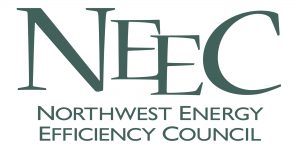Just when you think all is quiet on the energy front in Salem, small tempests can brew in the Capital teapot. Such as it was a few weeks ago, when a large transportation investment bill emerged at the Oregon Legislature. It was a large bill and patient readers who made it to page 258 were surprised to see language that, in effect, diverted portions of Oregon’s public purpose charge dollars now committed to building energy efficiency to go toward infrastructure investments in electric vehicles. Cutting to the final chapter of this story – the idea has been scrapped.
NEEC, along with a number of other stakeholders in Oregon, posed strong objections to this provision. Given the general support of the EE industry for vehicle electrification, it’s important to explain our position with precision. NEEC was concerned about the precedent that this potential diversion of funding represented as well as the zero sum game nature of the proposal. First, regarding diversion, it is no secret that public purpose charge funds going to the Energy Trust of Oregon have been a favorite target for some legislators really since the inception of the Trust. Various ideas ranging from elimination of the PPC to diversion of the funds to a whole host of other non-energy related projects have been met with strong and consistent opposition by NEEC and others. To now divert these funds to a project idea, which might otherwise have merit, sets a dangerous precedent that Oregon IOU ratepayers can be assessed charges that fund anything the Legislature desires – and all at the price of building energy efficiency.
Further, an investment in electric vehicle infrastructure is a great idea for a host of global environmental reasons and for some positive synergistic opportunities with building energy efficiency. However, to get there, it should not be set up as a zero sum game in which Peter’s merits are raided to pursue Paul’s ambition.
The teapot is once again quiet. The underlying issues remain. Oregon needs an investment in its transportation system, including a long term and structured infrastructure investment that supports vehicle electrification. Building energy efficiency can and should play a synergistic role in this plan. Let’s avoid future attempts to play one against another.
